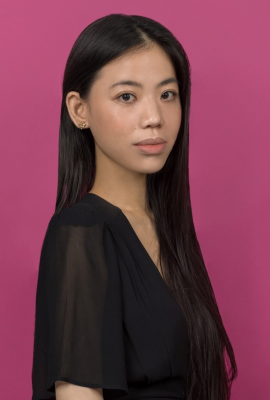Beauty and health continue to merge, particularly in Southeast Asia, where beauty supplements are marketed more holistically compared with previous years. Beauty supplements with skin whitening benefits are capitalising on this demand.
Players are delving deeper into purported and tangible benefits rather than “beauty from within” verbiage
A nod to dermocosmetics and ingredient-led beauty, edible skin care is growing exponentially due to the influx of vitamins and dietary supplements in Southeast Asia. An ingredient-led positioning has helped expand demand for these products, since consumers are increasingly using ingredients as a search mechanism to develop new beauty and food routines. L-cysteine and glutathione are examples of trending ingredients.
The emerging markets of Southeast Asia prize digital engagement much higher than personalised products or natural alternatives to traditional products
Source: Euromonitor International’s Voice of the Industry: Consumer Health survey, March 2022
Brands are embracing a scientific positioning to highlight that their ingredients have proven efficacy.
For example, Crystal Tomato is a home-grown Singapore brand which carries out extensive advertising in the business and shopping districts. Heliocare is a Spanish brand that has attracted consumers in local drugstores due to players marketing it as an “edible sunscreen”. The efficacy of these brands is highlighted in various medical journals, such as studies featuring Heliocare in The Journal of the American Academy of Dermatology, and Crystal Tomato featuring in Japan’s The Journal of Health and Medicine.
Malaysia leads the pack in beauty-related dietary supplementation in Southeast Asia
Often, these products are a combination of vitamins and minerals traditionally and scientifically thought to be good for the skin. There has always been an interest in these products, but their popularity has exploded tremendously recently, with Malaysia leading the pack in terms of beauty dietary supplementation.
In 2022, Malaysia posed the highest level of beauty-related dietary supplements across all Southeast Asian markets, at 17.6%
Source: Euromonitor International
Indonesia and Malaysia are markets with major halal certification requirements, but this has not stopped these two countries from being the manufacturing powerhouses of Southeast Asia.
The consumer pivot away from lightening and whitening claims in skin care is not as evident in supplements
It would be disingenuous to claim that Southeast Asia does not possess a love-hate relationship with products offering lightening or whitening properties. Self-love advocates highlight that the term “whitening” is detrimental to the self-esteem of consumers. As a result, brands have shifted to addressing hyper-pigmentation and adjacent demands that improve skin health, such as encouraging the usage of sunscreen and antioxidants. For example, Kao Bioré UV changed the packaging of its body care serum product from “Intensive White” to “Intensive Aura” in 2020.
Euromonitor’s Voice of the Consumer: Beauty survey, fielded June to July 2022 (n=20,320) found that fewer consumers sought out lightening/whitening features in skin care products in 2022 compared with pre-pandemic levels. In 2020, many brands replaced “lightening/whitening” benefits with “brightening” or “lightening dark spots” – which may help explain why fewer consumers sought out claims related to melanin from 2021 onwards.
However, this pivot away from lightening or whitening claims is less prevalent in the consumer health space. Most consumers in Southeast Asia are familiar with Traditional Chinese Medicine (TCM) and recommendations to use dried pears, pearl powder, peach gum, or white fungus in a bid for fairer skin. In addition, brands are bold in highlighting these ingredients and perceived benefits. It is not uncommon for TCM retailers such as Eu Yan Sang to market loose pearl powder to add to facial moisturiser.
Brands are experimenting with marketing beauty supplements holistically
Brands are seeking novel ways to market their products. Methods include utilising a legacy brand name for multiple skin care and consumer health products. For example, Heliocare has an entire range of beauty products to complement its flagship dietary supplements, with products ranging from sun care to colour cosmetics. In addition, Sato Hakubi has a brightening skin gel to complement its line of Hakubi White C dietary supplements. Other familiar names include Fancl, Meiji, and Sato Hakubi. Complementing the line-up are regional household names such as Dr Ora and Kinohimitsu.
Beauty supplements brands are also expanding distribution across a variety of channels, beyond the traditional route through dermatologists. Crystal Tomato is sold in both health and beauty specialists and skin care clinics. Japanese brand Fancl offers both skin care and dietary supplements at its stand-alone beauty counters. As beauty supplements expand their footprint, more traction is expected from players in marketing beauty and consumer health products together.
Learn more about blurring in our report, Blurring Wellness Concepts, to understand how companies across consumer goods are attracting consumers.
